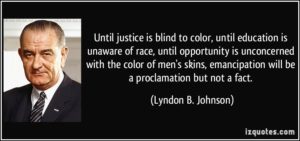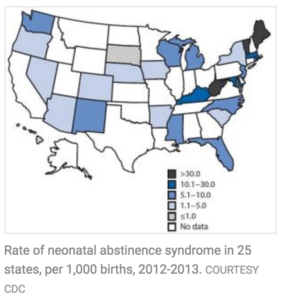
Photocredit: izquotes.com
“We are not as divided as we seem,” were the words expressed by President Obama to offer hope to a nation that once again had to deal with the aftermath of racially influenced murders. President Obama attempted to narrow the racial divide by emphasizing how far the country had come and that glory is possible after suffering. However, he shared that words alone were inadequate and real change is still needed.
The Civil Rights Act of 1964 did indeed move the country forward. However, the race to equity is far from over. Stories of race-based differences continue to plague the United States and are not unique to any specific setting. I recently conducted a study to examine whether race still matters in higher education. African American nurse educators shared personal narratives of how race-related challenges continue to undermine their potential in and outside the classroom. One professor shared how frequent blatant and subtle racist encounters made her live in a hypervigilant state.
Researchers at Johns Hopkins believe that being race-conscious could help explain the higher incidence of hypertension among African Americans. My father, an African American, battled hypertension for years before the disease destroyed his kidneys. Shortly after, he suffered a massive heart attack at age 52 and his life abruptly ended. I now find myself wondering how much his dark complexion, experiences with racial discrimination, and the race-conscious factor contributed to his early demise.
So what more can be done to promote equity? Broader attempts to address the inequalities in education, the justice system, and health care have emerged. Earlier this year the US. Department of Education proposed a rule that would standardize how states examine race and ethnicity based disproportionalities in areas like disciplinary actions and expulsions. The ruling would mandate that states identify and correct the factors that contribute to inequities. Health care systems are also analyzing and tracking patient satisfaction scores in an attempt to improve the quality of health care.
But are policies enough to change the inherent biases that dwell deep inside us? Our minds are wired to categorize and make associations that allow us to quickly respond and make sense of our world. Think about the associations you make on a daily basis. What thoughts come to your mind when you see someone you believe is homeless, obese, or foreign? How might you respond? Biases help explain the different ways we respond to students, colleagues, and patients. Efforts to address the implicit and explicit biases that influence how we treat others across so many settings are critical. But what else will it take to win the race to equity?
[caption id="attachment_11528" align="alignnone" width="300"] Photocredit: izquotes.com[/caption]
“We are
 A study from the Centers for Disease Control and Prevention looked at cases of neonatal abstinence syndrome, or NAS, that can occur in newborns whose mothers are addicted. NAS is usually due to opioid withdrawal, though it can occur as a result of other drug or alcohol withdrawal.
A study from the Centers for Disease Control and Prevention looked at cases of neonatal abstinence syndrome, or NAS, that can occur in newborns whose mothers are addicted. NAS is usually due to opioid withdrawal, though it can occur as a result of other drug or alcohol withdrawal.



